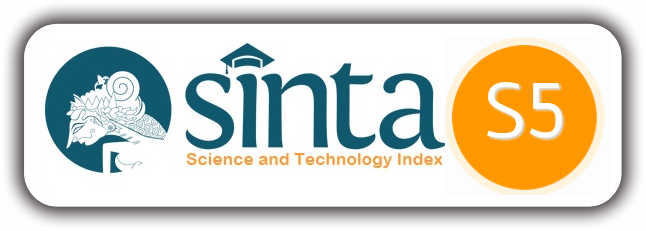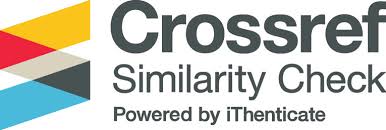PAJAK KARBON SEBAGAI SUMBER PENERIMAAN NEGARA DAN SISTEM PEMUNGUTANNYA
DOI:
https://doi.org/10.33827/akurasi2021.vol3.iss1.art96Keywords:
DGCE, excise, carbon tax, state revenueAbstract
The study aims to elaborate on carbon taxes as a potential source of state revenue. This study also provides an overview of the imposition of excise rates that can be applied in Indonesia. Besides, this study tries to look deeper into the procedures for reporting and monitoring excise tax paid by taxpayers. This research uses descriptive qualitative research methods. A review of documents and regulations related to carbon emissions in Indonesia and other countries is an important source. The study was conducted by comparing best practices in several countries with Indonesia regarding government policies regarding carbon tax policies. The study results show that there is potential for state revenue from carbon taxes. On the other hand, the collection of carbon taxes requires a system-integrated procedure between the Ministry of Finance and the Ministry of Environment and Forestry. Therefore, digitizing the system and establishing a data warehouse is important to support the Directorate General of Customs and Excise (DGCE) as the excise collection authority. An important finding in this study's conclusion is the urgent need for regulations to implement a carbon tax in Indonesia. In the future, this research is expected to trigger further research on carbon taxes and their effects on national economic growth.
References
Bridge, G., Bouzarovski, S., Bradshaw, M., & Eyre, N. (2013). Geographies of energy transition: Space, place and the low-carbon economy. Energy Policy, 53, 331–340.
Buchanan, J. M., & Flowers, M. (1975). The Public Finances, Homewood, IL: Richard D. Irwin.
Calderón, S., Alvarez, A. C., Loboguerrero, A. M., Arango, S., Calvin, K., Kober, T., Daenzer, K., & Fisher-Vanden, K. (2016). Achieving CO2 reductions in Colombia: Effects of carbon taxes and abatement targets. Energy Economics, 56, 575–586.
Christiansen, L., Bois von Kursk, O., & Haselip, J. A. (2018). UN Environment Emissions Gap Report 2018.
Cnossen, S. (2005). Theory and practice of excise taxation: Smoking, drinking, gambling, polluting, and driving. Oxford University Press.
Collier, P. (2008). The politics of hunger: How illusion and greed fan the food crisis. Foreign Affairs, 67–79.
Cresswell, W. J., & Creswell, J. W. (2009). Research Design: Qualitative, Quantitative, and Mixed Methods Approaches. SAGE Publications.
David Batchelor (Ed.). (2018). The Climate Resilience Handbook: Strategies for Climate Resilience. Marsh & McLennan Companies.
Gans, J., Stonecash, R., Byford, M., Mankiw, G., King, S., & Libich, J. (2017). Principles of Economics Asia-Pacific Edition with Online Study Tools 12 Months. Cengage AU.
Godden, D., & Allen, E. (2017). The development of modern revenue controls on alcoholic beverages. World Customs Journal, 11(2), 3–22.
Hennink, M., Hutter, I., & Bailey, A. (2011). In-dept interviews. In Qualitative research methods.
Hille, K. (2016, July 19). 2016 Climate Trends Continue to Break Records [Text]. NASA. http://www.nasa.gov/feature/goddard/2016/climate-trends-continue-to-break-records
Horowitz, J., Cronin, J.-A., Hawkins, H., Konda, L., & Yuskavage, A. (2017). Methodology for analyzing a carbon tax. US Department of the Treasury, Washington, DC.
Humphreys, J. (2007). Exploring a carbon tax for Australia. Centre for Independent Studies.
IPCC. (2007). Climate Change 2007: The Physical Science Basis. Contribution of Working Group I to the Fourth Assessment Report of the Intergovernmental Panel on Climate Change (IPCC). Cambridge University Press, UK.
Irama, A. B. (2019). POTENSI PENERIMAAN NEGARA DARI EMISI KARBON: LANGKAH OPTIMIS MEWUJUDKAN PEMBANGUNAN BERKELANJUTAN DI INDONESIA. INFO ARTHA, 3(2), 133–142.
Lazăr, A.-I. (2018). Economic Efficiency vs. Positive and Negative Externalities. Review of General Management, 27(1), 112–119.
Mardiasmo. (2016). Perpajakan Edisi Terbaru. Penerbit Andi.
Meng, S., Siriwardana, M., & McNeill, J. (2013). The Environmental and Economic Impact of the Carbon Tax in Australia. Environmental and Resource Economics, 54(3), 313–332. https://doi.org/10.1007/s10640-012-9600-4
Mundial, B. (2018). Doing business 2018: Reforming to create jobs. World Bank Group, Washington.
Nordhaus, W. D. (2006). After Kyoto: Alternative mechanisms to control global warming. American Economic Review, 96(2), 31–34.
OECD. (2012). OECD Environmental Outlook to 2050: The Consequences of Inaction - Key Facts and Figures - OECD. https://www.oecd.org/env/indicators-modelling-outlooks/oecdenvironmentaloutlookto2050theconsequencesofinaction-keyfactsandfigures.htm
Ortega-Ruiz, G., Mena-Nieto, A., & García-Ramos, J. E. (2020). Is India on the right pathway to reduce CO2 emissions? Decomposing an enlarged Kaya identity using the LMDI method for the period 1990–2016. Science of The Total Environment, 737, 139638.
Republik Indonesia. (1994). Undang-undang Republik Indonesia Nomor 12 Tahun 1994 tentang Perubahan atas Undang-undang Nomor 12 Tahun 1985 tentang Pajak Bumi dan Bangunan. Lembaran Negara RI tahun 1994 Nomor 62.
Republik Indonesia. (2007). Undang-undang Republik Indonesia Nomor 39 Tahun 2007 tentang Perubahan atas Undang-undang Nomor 11 Tahun 1995 tentang Cukai.
Republik Indonesia. (2008). Undang-Undang Republik Indonesia Nomor 36 Tahun 2008 tentang Perubahan Keempat atas Undang-Undang Nomor 7 Tahun 1983 tentang Pajak Penghasilan.
Republik Indonesia. (2009a). Undang-undang Republik Indonesia Nomor 16 Tahun 2009 tentang Penetapan Peraturan Pemerintah Pengganti Undang-Undang Nomor 5 Tahun 2008 Tentang Perubahan Keempat Atas Undang-Undang Nomor 6 Tahun 1983 Tentang Ketentuan Umum dan Tata Cara Perpajakan Menjadi.
Republik Indonesia. (2009b). Undang-undang Republik Indonesia Nomor 28 Tahun 2009 tentang Pajak Daerah dan Retribusi Daerah. Lembaran Negara RI tahun 2009 Nomor 130.
Republik Indonesia. (2016a). Peraturan Dirjen Bea Cukai Nomor PER-36/BC/2016 tentang Penyampaian Pemberitahuan Barang Kena Cukai Yang Selesai Dibuat. Sekretariat Direktorat Jenderal Bea dan Cukai.
Republik Indonesia. (2016b). Peraturan Menteri Keuangan Republik Indonesia Nomor 94/PMK.04/2016 tentang Pemberitahuan Barang Kena Cukai yang Selesai Dibuat. Sekretariat Kementerian Keuangan.
Republik Indonesia. (2016c). Undang-undang Republik Indonesia Nomor 16 Tahun 2016 tentang Pengesahan Paris Agreement to The United Nations Framework Convention on Climate Change (Persetujuan Paris atas Konvensi Kerangka Kerja Perserikatan Bangsa-bangsa Mengenai Perubahan Iklim).
Sanglimsuwan, K. (2011). Carbon dioxide emissions and economic growth: An econometric analysis. International Research Journal of Finance and Economics, 67(1), 97–102.
World Bank. (2018). Economics of tobacco taxation toolkit. World Bank Publications, 13–16.
World Bank. (2020). Carbon Pricing Dasboard. https://carbonpricingdashboard.worldbank.org/map_data
World Health Organization. (2014). 7 million premature deaths annually linked to air pollution. World Health Organization, Geneva, Switzerland.







